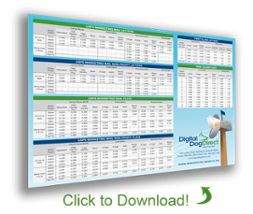 In order to form a clear call-to-action (CTA) for your direct mail marketing campaign, you need to answer the following question in as simple terms as possible: “What do I want my target customer to do as a result of seeing this campaign?” Whether the response to that question is to “learn more”, “sign up”, “buy today”, or something else that is specific to your business’s objectives, the answer will be very telling for how you should craft and target your campaign.
In order to form a clear call-to-action (CTA) for your direct mail marketing campaign, you need to answer the following question in as simple terms as possible: “What do I want my target customer to do as a result of seeing this campaign?” Whether the response to that question is to “learn more”, “sign up”, “buy today”, or something else that is specific to your business’s objectives, the answer will be very telling for how you should craft and target your campaign.
Here are some things to keep in mind when crafting your CTA:
Keep your CTA short and simple
Marketers should make sure their direct mail CTA is short, sweet, and to the point. After all, a CTA is essentially just a short summary of exactly what you want your target customer to do. Don’t cloud your CTA by including too much information or wording that isn’t direct; rather, think of the CTA as an exclamation point that’s used to emphasize the points you’ve already made.
Make sure your CTA stands out
Don’t make the mistake of having your CTA blend in with the rest of the creative on your mail piece. Instead, make sure it stands out and is eye-catching on its own. Whether it’s including the CTA in a bolded font, putting it in a little colored callout box, or simply surrounding it with plenty of white space so that it’s easy to see, you should make sure your CTA is easily identifiable from a visual perspective. That way, it can be perceived quickly (especially since a lot of people scan their mail at a glance).
Don’t assume the CTA is clear—make sure it is!
Many might assume the CTA is already obvious based on what else is included in the mail piece (“It’s obvious I want them to review our new financing options—why else would I have sent them a brochure filled with rates?”) but it’s not always obvious to the person you’re sending to. Combat this oversight by having people outside your department read the piece to check its clarity. Or, test two CTAs to see which drives more response. Your mail piece is probably one among many vying for your target customer’s attention on any given day so, take the extra step to make sure it’s very clear what you’re asking the recipient to do.
Use your CTA as another opportunity to be persuasive
There’s no reason to make your CTA needlessly verbose and over-complicated (see point #1) but that doesn’t mean the CTA can’t be persuasive. In fact, a CTA can be used to strategically complement the information that’s already been provided. For example, here’s a CTA that’s both clear and persuasive: “Join the thousands of happy customers who enjoy our services by subscribing today.” Not only is the desired action clear (“subscribing today”), the fact that it mentions how many other customers have already engaged with the business (“thousands of happy customers”) is good social proof that might make a future customer more likely to keep this business in mind.
Don’t include too many CTAs
In most cases, a campaign should only have one CTA, so as not confuse consumers or muddy the main message. That said, there are certain occasions where adding more than one CTA is okay, especially when it is clear that there is a primary CTA and then secondary CTAs. An example would be including a “Follow us on Instagram!” callout within a campaign that is designed to encourage people to check out a new store location. As long as the CTAs are clearly positioned as primary (visiting the new store) and secondary (following the business on Instagram) through the campaign’s creative and positioning, it can be good way to get the most out of your direct mail send.
Already have an idea of what you want to accomplish with your next direct mail campaign? Call us today and we’ll help you craft a top-notch CTA.



Comments